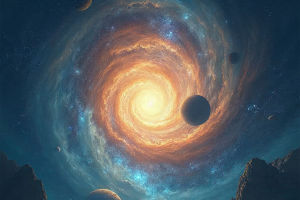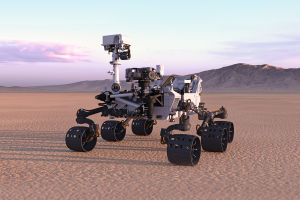
The Earth, as we know it, is the only planet in our solar system capable of supporting life, and it all began around 4.5 billion years ago. We often marvel at how life evolved here, and our fascination with the planet’s history grows as we uncover more about its formation and the life it supports.
Since the dawn of humanity, we've been searching for answers to the question: "What made Earth so unique?" From the initial collision of celestial bodies to the eventual formation of oceans, our planet has undergone significant changes to become the thriving, diverse environment we know today.
The early Earth was quite a different place, with intense volcanic activity, a dense atmosphere, and constant bombardment by asteroids. Over time, however, the conditions stabilized, leading to the creation of solid land and the oceans that would become the cradle of life.
Earth's Evolution in 10 Minutes
Video by What If
The First Signs of Life
About 3.5 billion years ago, deep-sea hydrothermal vents were the perfect environment for the earliest forms of life to take root. These simple microorganisms, some of the earliest known life forms, were able to thrive in the harsh, hot conditions of the ocean floor. Over millions of years, life began to evolve and diversify. Microorganisms capable of photosynthesis appeared, which led to the production of oxygen and transformed Earth's atmosphere.
This critical shift in the planet’s chemistry set the stage for more complex life forms. As oxygen levels increased, new species of life evolved, including the first multicellular organisms. Life on Earth took its first steps toward becoming the vast, complex web of species we now see. These early life forms laid the foundation for everything from the smallest bacteria to the largest animals roaming the planet today.
Earth's Changing Climate
Earth’s climate has always been a key factor in the development of life. Over the ages, our planet has undergone dramatic climate shifts. From the hot, humid conditions that existed in Earth's earliest days to the Ice Ages that followed, life had to adapt to survive. One of the most significant events was the Great Oxygenation Event, which dramatically changed the atmosphere, creating the conditions necessary for the explosion of life forms.
This adaptability was key to the evolution of life. Life has continuously found a way to thrive despite changes in the planet’s environment, from extreme heat to cold, from the depths of the ocean to the highest mountain tops. Over time, ecosystems became more complex, leading to a greater variety of species.
Life Today
Today, life on Earth is incredibly diverse, with millions of species spread across land, water, and air. It's estimated that there are between 12 to 14 million species living on Earth, with many yet to be discovered. Despite the challenges posed by natural disasters, human activity, and climate change, life on Earth continues to adapt and evolve, proving the resilience of life.
As we study Earth's history, it becomes clear that the planet's ability to sustain life is not an accident. The perfect combination of factors, including its distance from the sun, the presence of water, and a stable atmosphere, makes Earth an ideal environment for life to flourish. As we explore more of our planet and beyond, we continue to learn more about how life began and how it continues to evolve. We hope that this journey of discovery will help us protect the fragile environment that sustains all life.
A Journey of Discovery
The study of Earth's history and its first life forms is not just a scientific endeavor but a personal one. We all have a connection to the Earth, and by understanding how life began here, we come to understand our place in the universe. Our exploration of this fascinating journey continues, and as we learn more, we uncover insights that may one day shape the future of humanity itself.
As we look toward the future, we are reminded of the importance of protecting our planet. From conserving natural resources to addressing climate change, the decisions we make today will impact the Earth and its future inhabitants. The story of Earth’s first life is one of survival, resilience, and hope. Let’s continue to learn from it and protect the planet that has given us everything.
Thanks for joining us on this journey, Lykkers! Keep exploring, stay curious, and remember—our Earth is a treasure trove of history and life!


